
At its core, paid media advertising describes an integrated approach to digital marketing that leverages paid search, programmatic advertising, display advertising, paid social and more - all with an eye towards delivering your prospects the types of targeted ads they need to see to drive more traffic, increase leads and convert into long-term, loyal and paying customers.
But paid media advertising alone isn't enough to get this particular job done. To truly unlock the results you're after, you have to build a true full-funnel paid media advertising strategy from the ground up.
Remember that it takes time to turn leads into customers, and each stage of their buyer's journey is visualized as a stage on the funnel. As someone moves from one part of the funnel to the bottom, your marketing efforts become more focused and precise in a way that creates the highest possibility that someone will actually convert.
A full-funnel paid media advertising strategy means that you have content ready-to-go for someone at ANY stage of the buyer's journey, regardless of where they happen to be at the moment. It's an incredibly helpful resource that can improve your sales and your return on investment over time - but it's also one that requires you to keep a few key things in mind along the way.
Personas by Marketing Funnel: Breaking Things Down
Before you can begin the process of setting up a full-funnel paid media advertising strategy, you first need to come to a better understanding of exactly who you're creating this strategy for.
At Marcel Digital, we break the marketing funnel down into three categories:
- Awareness
- Consideration
- Conversion
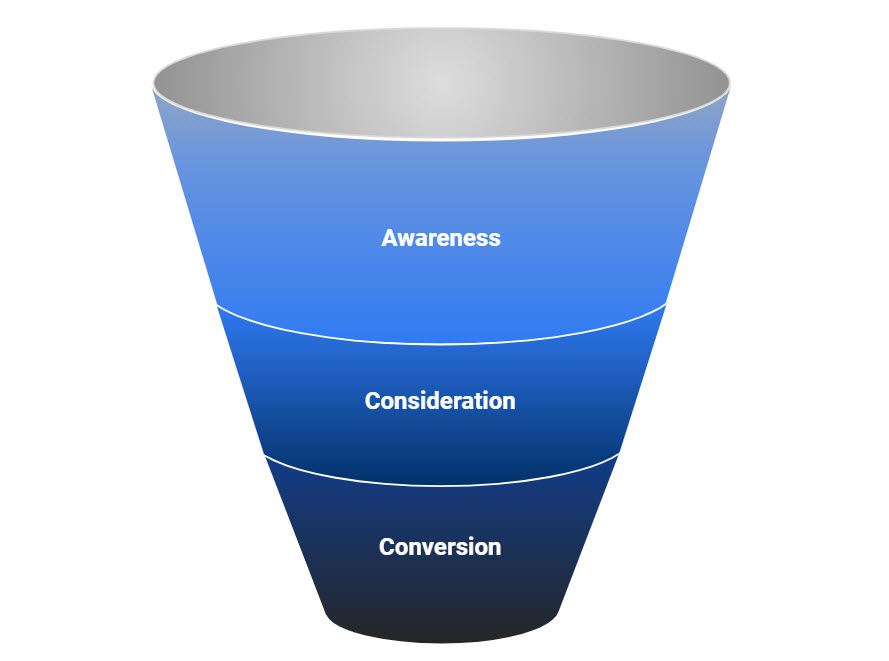
Generally speaking, there are three main personas that you'll want to familiarize and concern yourself with inside these portions of the funnel. These include:
Awareness Personas
These are people who likely don't know much, if anything, about your brand name or your products and services. They've probably never been to your website and they themselves are likely unsure of exactly what they need. They're typically not ready to provide personal information, probably don't have a concept of their potential budget, and their "buying decision" maybe months or even years away. They're searching for terms like "how to...?" and "what is...?" most of the time.
Consideration Personas
These are people who may know your brand name and may have been to your website already - meaning they probably know at least a little about your products and services. They know they have a need that must be met, but they're unsure of how to do that or where to start. At the very least, they know the name of the solution to their issue and they're officially on the hunt - meaning their "buying decision" is probably months or even weeks away. These are the people who are searching for terms like "find a...", or who are qualifying specific keywords like "PPC services." They may also be engaged in action-based searches like "paid media agency."
Conversion Personas
These people likely know your brand name and have been to your website at least once. They have a clearer vision of not only their issue, but what they need to do in order to solve it. They know what option is best for their company or department, and their "buying decision" is probably weeks or even days away. These are the people who are performing searches like "... near me," or are using branded keywords, or are conducting product-specific searches. They're also typically conducting localized searches via terms like "SEO agency Chicago."
Targeting by Paid Media Channel
Once you have a better understanding of exactly who you're trying to reach, you can begin to select the desired paid media channel that will help you do so in the most effective way possible.
You have a variety of different options available to you, including but not limited to those like the following.
The Power of Paid Search
The major benefit of paid search is that it can be leveraged at all three levels of the marketing funnel, provided that you know the intent of the user in question. Searches literally pull themselves to your products or services either through keyword searches or because yours is the ad they chose to click on in the first place.
With regards to a paid search marketing funnel, understand that prospects may be years away from making a decision. Thus, they are your target that is casually learning. They're searching for terms like "how to...?" and "what is...?", with one of the most prominent examples being "what are the benefits of SEO?"
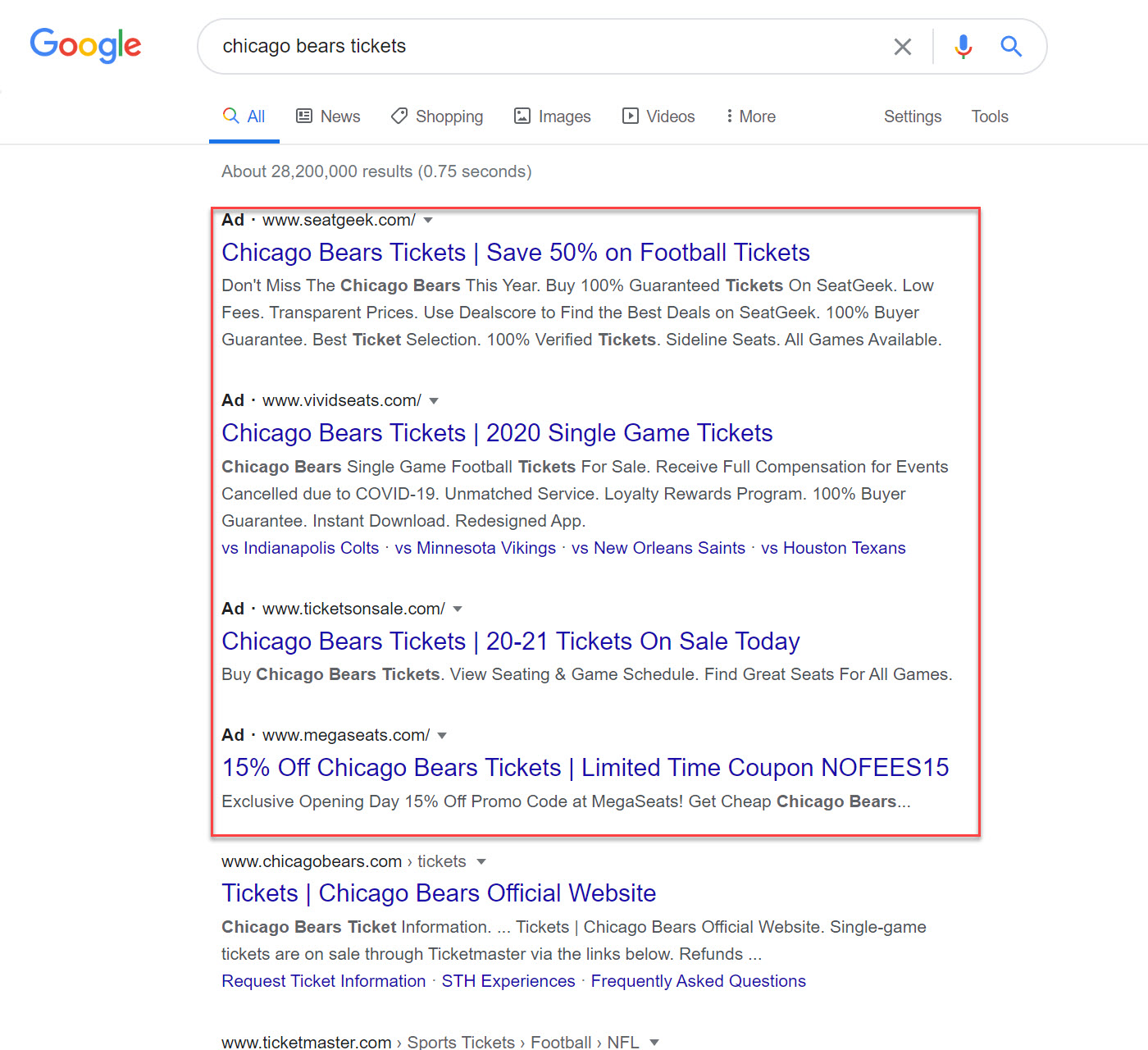
Your prospects in the consideration stage are more actively learning, which means that your approach will need to take this into account. Their searches tend to be more action-based via terms like "find a..." or, at the very least, additional qualifying keywords within the selected search phrase. "Find an SEO agency" would be a prime example of this.
The conversion stage is also known as "demand capture," as the searches of these users qualify things further with adjustments like "... near me," branded terms, product-specific searches or localized searches. An example of this would be "Marcel Digital SEO" and if someone is getting that specific with their searches, they could be hours away from making a buying decision.
The Dawn of Display Advertising
Display advertising as a concept offers a wide array of different options in terms of not only audience targeting, but the types of creative assets that you can use that can fit into all stages of the funnel. Display lets you use audience and interest targeting to your advantage, increasing consideration and demand (or "push") for your products and services at the exact same time.
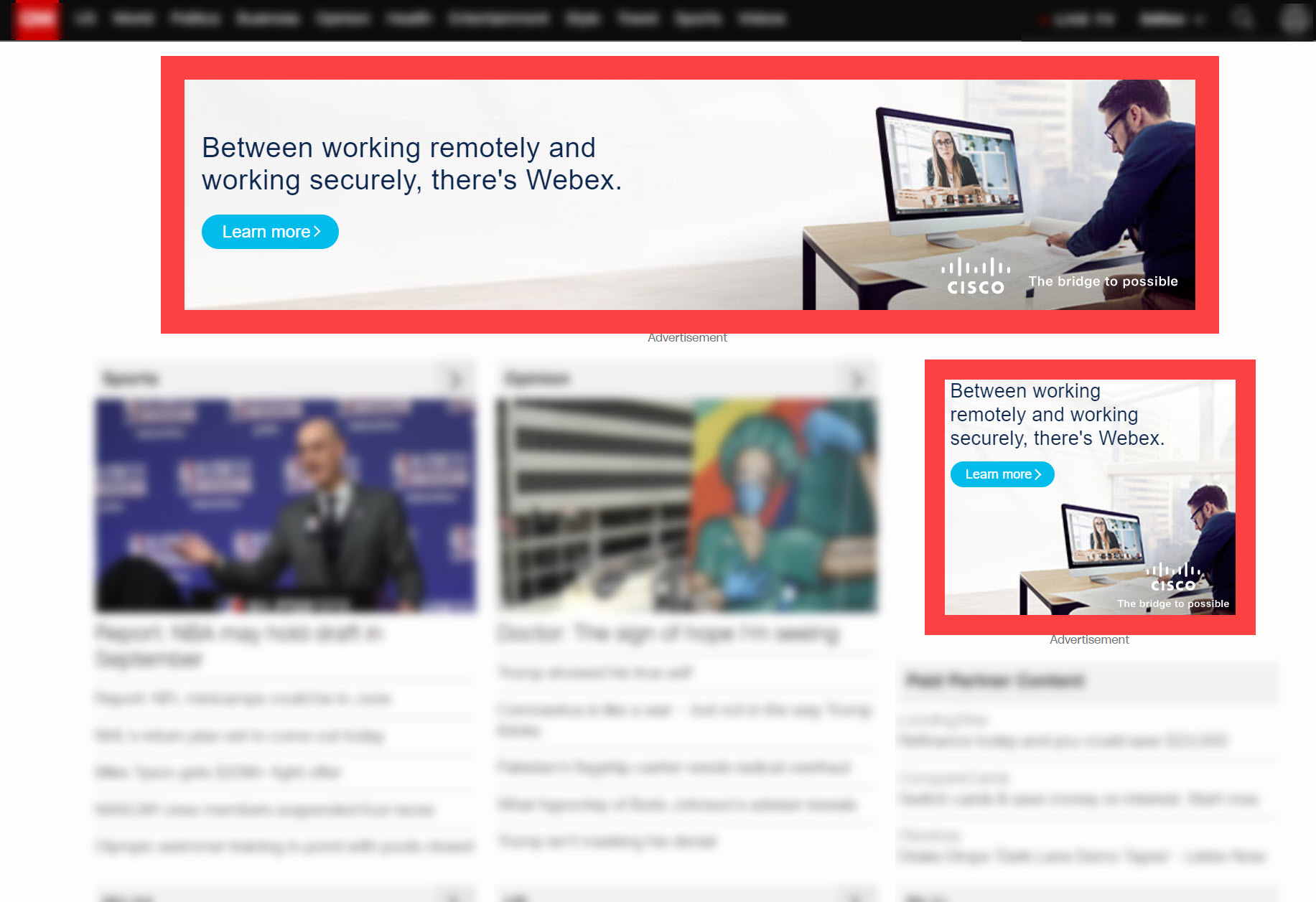
While you build your display advertising marketing funnel, you'll want to keep a few things in mind like:
- Awareness: You have a unique opportunity here to leverage demographic and interest-based targeting factors to go after people who are most likely to become your ideal customer in the first place. This includes criteria like age, gender, HHI, education, fitness, cooking interests, etc.
- Consideration: You can also target individuals specifically interested in your products and services based on the keywords they're using to search. You can show your targets a display ad, for example, if they have searched for certain related terms in the past. This is called "custom intent."
- Note that like the above, you can also target individuals who visit websites related to your products and services.
- You can also leverage your first-party data in the display channel to target "lookalike audiences" - or those people who are similar to those on your existing marketing lists.
It's also important to note that you have a number of unique options when it comes to retargeting that absolutely fall under the display advertising umbrella. Website retargeting, for example, means that visitors to your site are "cookied" and are thus shown targeted ads the next time they surf the web, even if it isn't on your domain.
You can also use customer match/CRM lists to show specific individuals from your marketing lists specific ads, enabling you to get the right message in front of the right person at exactly the right time.
Finally, we arrive at how display advertising intersects with your goals regarding conversion and demand capture. Here, you can dive deep into specific product retargeting methods and experiment with things like shopping cart abandonment. If a customer is about to make a purchase but didn't for whatever reason, they can be shown a promotion for that exact same product to incentivize them to come back and complete that purchase.
The Unbeatable Opportunity of Paid Social Advertising
As the name suggests, paid social advertising includes the use of channels like Facebook, Twitter, LinkedIn, Snapchat, Pinterest and more. These channels all offer multiple (and unique) options in terms of elements like campaign objectives and types, creative assets and ad units, and audience and geographic targeting.
In general, paid social uses audience and interest targeting to increase awareness, consideration and conversion (or "push") for your products and services in an intimate and organic way.
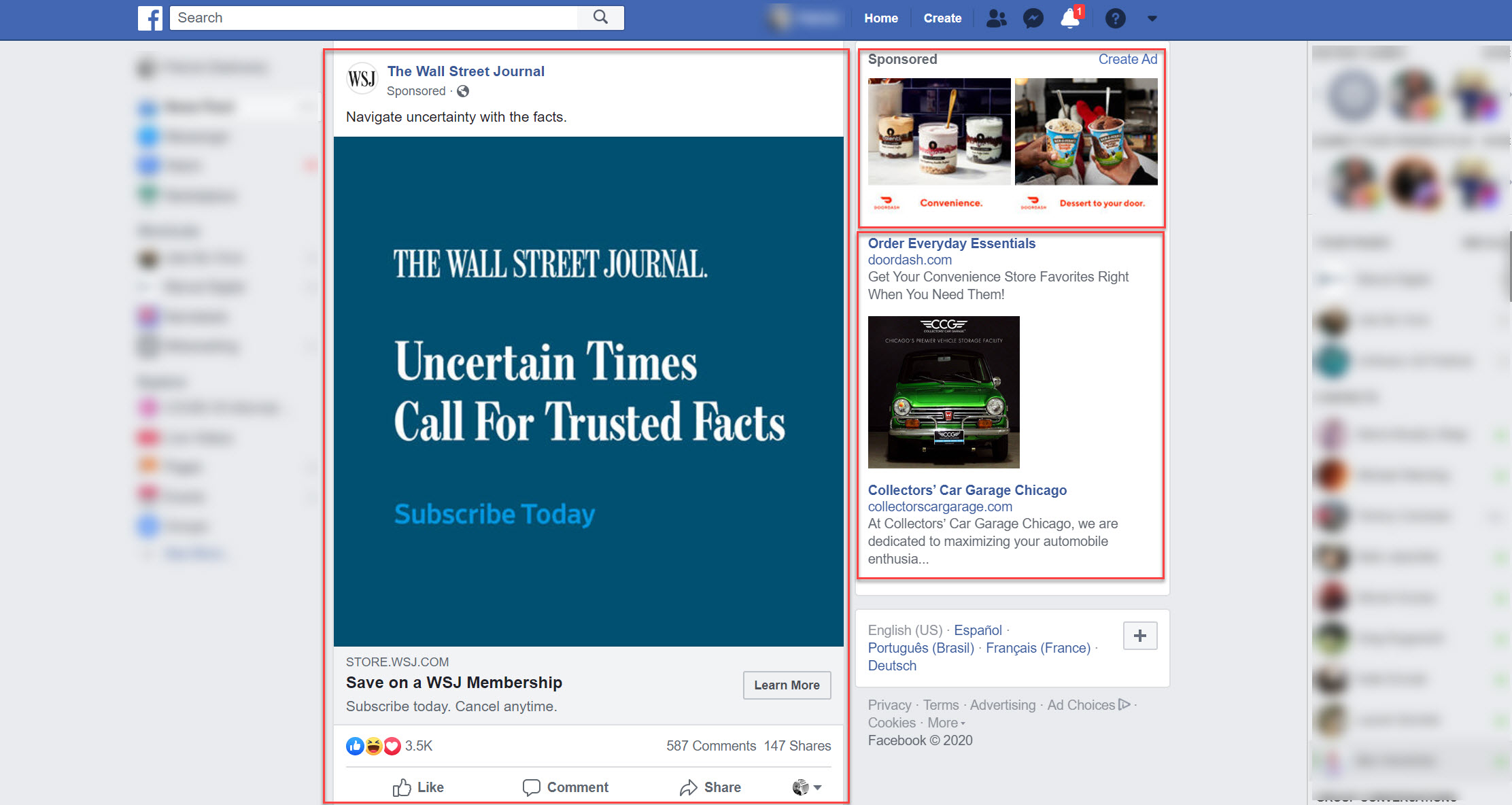
Overall, your paid social marketing funnel will include components like:
- Awareness: Here is the prime opportunity to conduct "frequency and reach" campaigns, which typically target cold audiences as well as new geographic, demographic and interest-based targets. This is when clicks take targets to the desired website, where campaigns are optimized with reach and frequency in mind.
- Consideration: "Click to website" campaigns target geographic, demographic and interest principles, as well as lookalike audiences in a way that drives targets to the website in question because their previous behavior indicates they are most likely to click.
- "Video Views" can also be a part of this, as they target the same factors as outlined above to present users with an option to view video content with the goal being that they ultimately click to view the content in question.
With regards to conversion/demand capture in particular, there are also a number of techniques that you can choose to leverage depending on the specific audience you're trying to reach.
- Conversion ads, for example, have customized calls-to-action in the ads themselves that are shown to individuals who have previously demonstrated behavior indicating that they are more likely to convert in the near term.
- Lead generation ads make fillable forms available within the platform AFTER clicking the ad, which itself has been shown to targets who have previously demonstrated behavior indicating that they are more likely to convert in the near term.
- Product listing ads outline individual products (and their compelling descriptions) that are shown to targets who have displayed previous behavior indicating that they are very close to their buying decision.
The Advantages of Programmatic Advertising
Next, we arrive at the concept of programmatic advertising: something that offers many options in terms of audience targeting and creative assets that can again fit into all stages of the marketing funnel.
Programmatic is particularly effective in that it uses audience and interest targeting to increase consideration and demand (or "push") for your products and services. While display network advertising takes place on a closed network, programmatic is a method of buying ad space that involves multiple ad networks - potentially increasing your audience reach exponentially.
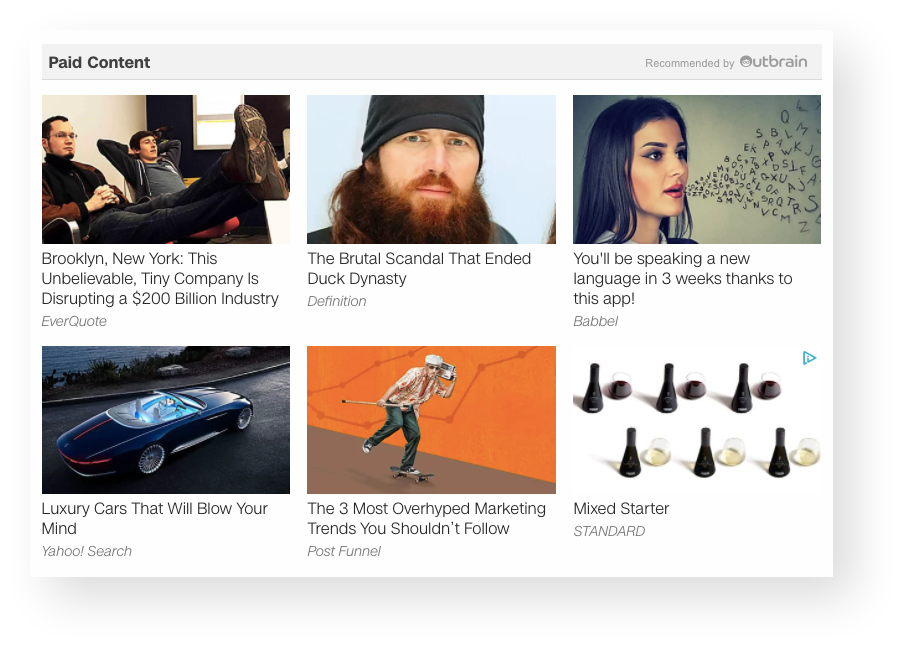
The typical programmatic marketing strategy includes elements like:
- Awareness: Here, your audience targeting is focused on demographic, behavior and interest-based targeting. Examples include age, gender, HHI, education, fitness, cooking interests and more. Audience targeting is particularly useful if you have an idea of the type of person you're looking for, but you're not exactly sure how to get in front of them.
- Consideration: Here you'll use concepts like contextual targeting, or targeting individuals specifically interested in your products and services through the keywords they search. You can show your targets a display ad if they have searched for certain keywords in the past, for example. Lookalike audiences are also helpful, as again they let you extract more value out of your first-party data.
- Retargeting: Website retargeting and customer match/CRM lists (as discussed above) again prove invaluable opportunities to get your message in front of the right person exactly when they need to see it.
- Conversion/Demand Capture: Here, you'll dive deep into specific product retargeting for the purposes of shopping cart abandonment and similar goals.
The Age of Amazon Advertising
Finally, we arrive at the concept of Amazon advertising - something that has become particularly important over the last decade in particular.
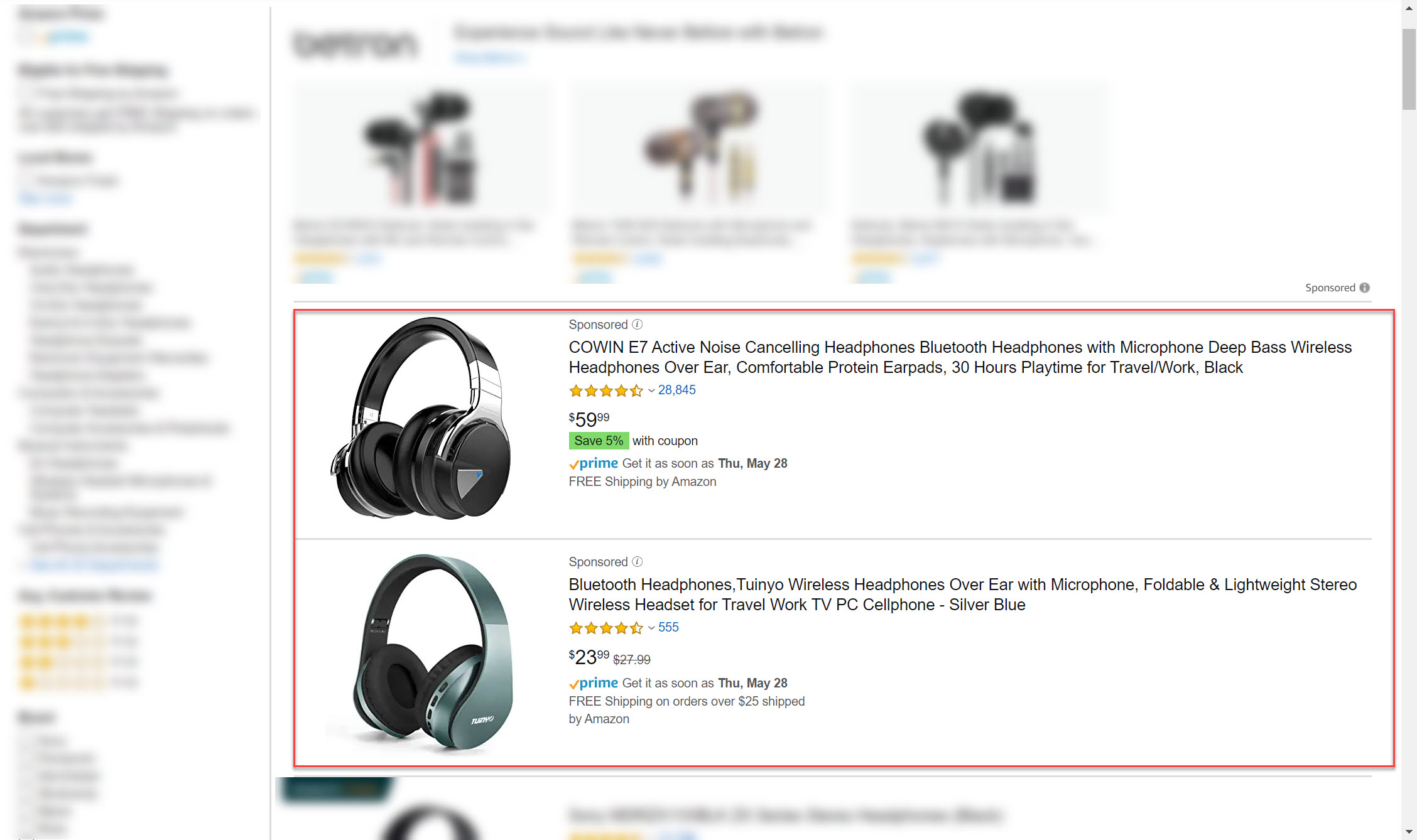
Amazon advertising works similarly to Google Ads in that a user types in search terms into a search box and results appear almost instantly. Amazon advertising in particular gives advertisers the opportunity to increase brand AND product visibility by bidding on relevant keywords in a way that falls in line with their overall budget.
Typically, an Amazon advertising marketing funnel includes components like:
- Awareness: This is when you conduct things like "sponsored brand" campaigns, using custom messaging to help shoppers see your brand while driving them to your Amazon store (or a custom landing page) through ad units. Sponsored display campaigns are equally beneficial, as they allow you to reach relevant audiences based on previous Amazon shopping activities.
- Consideration: Here you'll use "sponsored product" campaigns to increase product visibility and sales. Search terms are the primary targeting option and non-branded keywords offer stronger product consideration.
- Conversion: "Sponsored product" campaigns are again helpful towards this goal, as branded searches provide lower funnel targeting options that may otherwise be unavailable to you.
If you'd like to find out more information about how to create the right full-funnel marketing strategy for your business, or if you have any additional questions that you'd like to discuss with someone in a bit more detail, give us a shout.


Paid Media
About the author
Morgan Oakes
Morgan is the Paid Media Director at Marcel Digital, specializing in creative ways to provide solutions in paid advertising platforms for all types of goals.